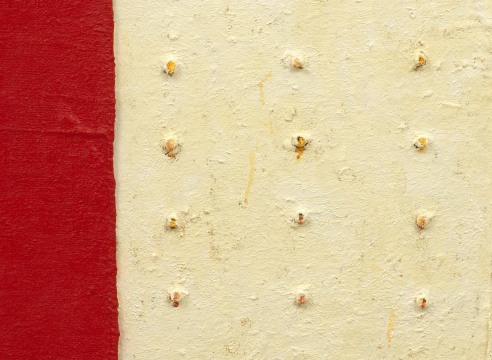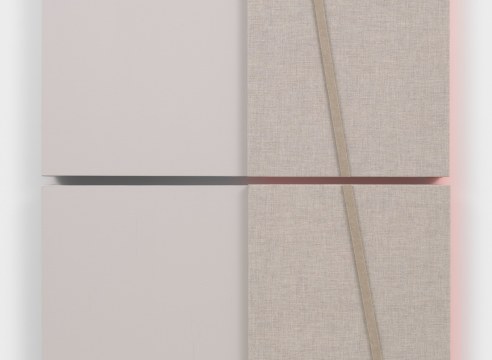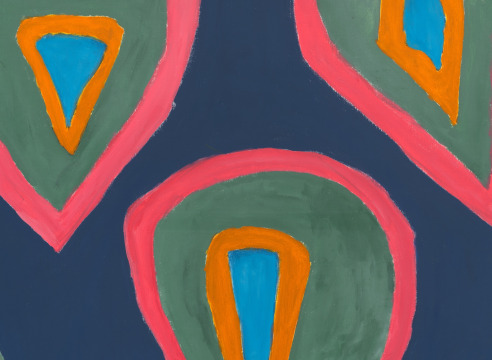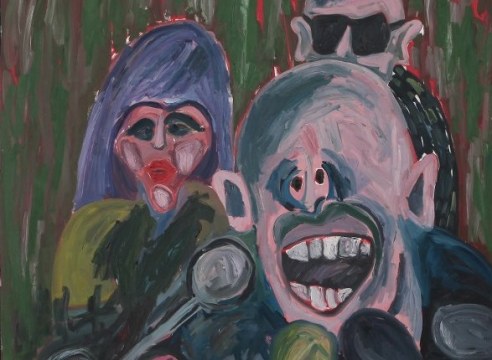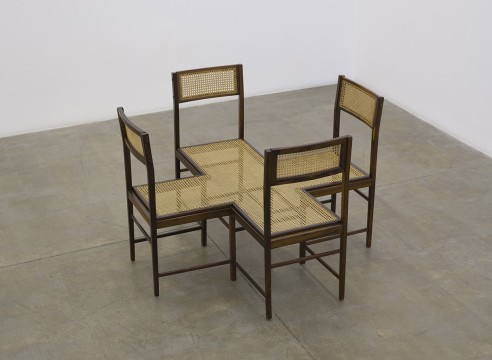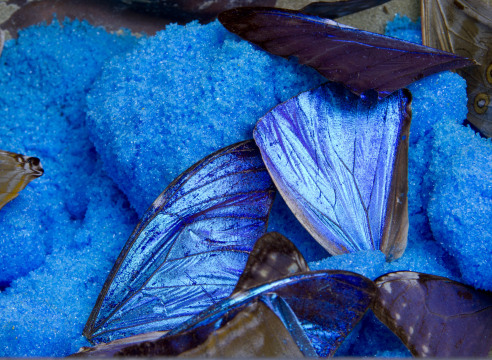
Frieze Seoul 2022
COEX | 513 Yeongdong-daero, Gangnam-gu, 06164, Seoul | Booth C18 | September 2–5, 2022
코엑스 | 06164, 서울특별시 강남구 영동대로 513 | 부스 C18 | 2022년 9월 2일 - 5일
Preview (invitation-only): September 2, 2022
Public Days: September 3–5, 2022
이 텍스트의 한국어 버전을 보려면 여기를 클릭하십시오.
Alexander Gray Associates presented a selection of recent and historical paintings, sculptures, and works on paper by Frank Bowling, Ricardo Brey, Melvin Edwards, Harmony Hammond, Jennie C. Jones, Steve Locke, Betty Parsons, Hassan Sharif, Valeska Soares, and Jack Whitten. Continuing the Gallery’s commitment to spotlighting artists who challenge conceptual and formal conventions, the Gallery’s display foregrounds innovative approaches to abstraction, materiality, and representation.
For decades, Frank Bowling challenged the limits of abstraction. Bowling’s paintings like Worpswedevisit (Green Mansions) (1981) incorporate autobiography and the legacy of the African diaspora into their compositions through the use of swirling plumes of acrylic pigment whose earthy tones simultaneously suggest water and geological strata. A monument to the artist’s investigation into color and form, the strict formalism of Worpswedevisit (Green Mansions) is undercut by its title, which references a 1904 novel set near Guyana, his childhood home.
Melvin Edwards’s sculptures like A Sign of X (1984–94) are emblematic of his ability to imbue salvaged industrial materials with complex cultural histories. At once a tribute to the assassinated civil rights leader Malcolm X and a reference to the algebraic use of “x” to denote the universal unknown, the work invites viewers to construct narratives around violence, mourning, and the African American experience.
Ricardo Brey’s practice marries the complex visual and cultural vocabularies of his native Cuba with a deep, nuanced understanding of the Western art historical canon. Embodying Brey’s assertation that art is a form of alchemy, Unsettling (2019–20) brings together found objects like an ornate worked metal wheel with a raw piece of stone, juxtaposing the natural with the artificial while simultaneously transforming both components into something distinctly new.
Harmony Hammond’s recent works center feminist and queer content through their focus on materiality and the indexical. Chenille #4 (2016–17) belongs to an ongoing series of paintings by the artist that incorporate rough burlap and grommets into their construction. In these works, Hammond mines craft traditions—“women’s work”—and modernism to create abstract canvases that, she argues, “perform queerly” due to their utilization of “near monochrome” color.
Jennie C. Jones’s recent works expand her research into the sonic, illustrating aural experiences visually through innovative approaches to geometry, color, and material. Corner Phrase / Soft Measure (2020) breaks away from the flat plane of the wall to wrap around a corner, a gesture that underscores the work’s objecthood and further aligns its reductive composition with Minimalism. As Jones observes, “There are social and political ramifications to rejecting ‘subject’ and embracing ‘object’—as an African American woman, much more is at stake. Minimalism becomes a radical gesture empowering a refusal to sell my narrative or bodies.”
Steve Locke investigates themes of male desire, vulnerability, and sexuality in his paintings. Works like Cruisers #1 (2021) capture intensely intimate moments between gay men, subverting traditional representations of masculinity and challenging conventional understandings of portraiture. Locke’s Cruisers emerge from the artist’s interest in, his words, “The exchange of looks, the privilege of looking and the wish to be seen . . .”
Betty Parsons began creating abstract paintings in the 1940s. Deeply influenced by the natural world, Parsons employed a purely associative mode of abstraction in her works on paper as a tool to convey how her surroundings made her feel, striving to capture what she once described as the “sheer energy” of a place.
Hassan Sharif was a pioneer of conceptual art and experimental practice in the Middle East. Begun in response to the rapidly changing landscape of material culture in the U.A.E. following its independence, his sculptural series of Objects (1982–2016) “weaves” together local and imported materials to critically reflect on the rapid industrialization and burgeoning consumerism of the artist’s Dubai home.
Valeska Soares rejects the necessity of monolithic narrative in her works, opting instead to provide people with what she terms “triggers that activate memories and contexts.” In Doubleface (Buff Titanium White/Sap Green) (2019), Soares collapses the disparate histories of art and objects by transforming a recovered vintage oil painting into a contemporary work, whose surface uncurls to reveal a glimpse of the hidden figural elements.
A pioneer of abstract painting, Jack Whitten pushed the boundaries of the medium through innovative materials, methods, and processes. Single Loop: For Toots (2012) belongs to a series of late paintings by the artist that feature loop imagery and investigate the relationship between figure and ground. Titled in homage to the artist’s sister, Toots, whose favorite color was red, the work recalls the artist’s 1970s experiments with Xerox toner and his gestural Slab Paintings and Greek Alphabet canvases of the same decade.
Together, these ten artists push the formal boundaries of their art-making practices, expanding the potentialities of abstraction, materiality, and representation to create unique lexicons that convey personal and collective experience. As Soares mused on her own deeply personal method, “the only way I can engage is to disconnect and create my own personal symbology and marks, thus creating a different language of my own. . . . It’s always interesting to me how I get to here. How do I get to be able to speak in this particular language that’s mine?”






































